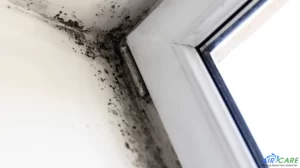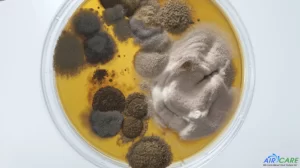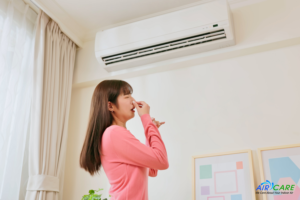Clearing the Air: A Guide to Home Allergen Air Testing for Healthier Living

Every breath you take contains invisible particles that can have a significant impact on your health and well-being. Allergens, pollutants, and other airborne contaminants can lurk in your home, causing a range of health problems, from allergies and asthma to respiratory issues. To truly understand the quality of the air you breathe indoors and take steps toward a healthier living environment, it’s essential to consider home allergen air testing.
The Invisible Threat: Indoor Air Contaminants
Before we explore the benefits of comprehensive air duct services, let’s take a closer look at what your air duct system does. Air ducts are the network of passages that circulate heated or cooled air throughout your home. Over time, these ducts can accumulate dust, debris, allergens, and even mold. This buildup can have a range of negative effects on your indoor air quality and overall well-being.
The Invisible Threat: Indoor Air Contaminants
Indoor air quality is a critical factor that can affect your overall health. Many people spend the majority of their time indoors, making the air they breathe at home a significant concern.
Common indoor air contaminants include:
- Dust Mites. These microscopic creatures thrive in bedding, upholstery, and carpets and are a common trigger for allergies.
- Pollen. Pollen from outdoor plants can find its way into your home, exacerbating seasonal allergies.
- Mold Spores. Mold can grow in damp areas, releasing spores into the air that can cause respiratory problems.
- Pet Dander. Even if you’re not allergic to your pets, their dander can still affect indoor air quality.
- Volatile Organic Compounds (VOCs. These chemicals are released by household products, paints, and furniture and can contribute to indoor air pollution.
- Tobacco Smoke. Secondhand smoke can linger in the air and is a known carcinogen.
Why Home Allergen Air Testing Matters
Home allergen air testing is a valuable tool for assessing and improving indoor air quality. Here are several reasons why it matters:
- Identifying Allergens. Testing can pinpoint specific allergens or pollutants present in your home, helping you take targeted action.
- Healthier Living. Better indoor air quality can lead to reduced allergies, asthma symptoms, and overall better health for you and your family.
- Peace of Mind. Knowing the state of your indoor air can provide peace of mind, especially if you have young children, the elderly, or individuals with respiratory conditions in your household.
- Customized Solutions. Test results can guide you in selecting the most effective air purifiers, filters, and ventilation systems tailored to your specific needs.
The Home Allergen Air Testing Process

Home allergen air testing typically involves the following steps:
- Consultation. Start by consulting with a professional indoor air quality expert who can recommend the right tests based on your concerns and specific indoor environment.
- Sample Collection. Samples of indoor air are collected using specialized equipment. These samples are then sent to a laboratory for analysis.
- Laboratory Analysis. Trained technicians analyze the samples to identify allergens and pollutants present in your home.
- Results and Recommendations. Once the results are available, you’ll receive a report detailing the types and levels of allergens and pollutants found. Experts will also provide recommendations for improving air quality.
Taking Action to Improve Air Quality
Armed with the knowledge gained from home allergen air testing, you can take proactive steps to improve your indoor air quality.
- Air Purification: Consider using high-quality air purifiers with HEPA filters to remove allergens and pollutants from the air.
- Proper Ventilation: Ensure your home is well-ventilated to prevent the buildup of indoor air pollutants.
- Regular Cleaning: Regularly clean and vacuum your home, especially areas prone to dust and pet dander.
- Humidity Control: Maintain indoor humidity levels between 30% and 50% to prevent mold growth.
- Allergen-Proofing: Take steps to allergen-proof your home, such as using an allergen-resistant mattress and pillow covers.
- No Smoking: Implement a strict no-smoking policy indoors.
Conclusion
Home allergen air testing is a powerful tool for understanding and improving indoor air quality. It allows you to identify specific allergens and pollutants that may be affecting your health and the well-being of your family. By taking informed actions to reduce these contaminants and maintain a healthier living environment, you can breathe easier and enjoy a higher quality of life within the comfort of your home. Don’t underestimate the importance of clear air in creating a healthier and more comfortable living space.

Mold Mitigation for Allergies and Asthma: How to Improve Indoor Air Quality
Mold Mitigation for Allergies and Asthma: How to Improve Indoor Air Quality Indoor air quality plays a crucial role in maintaining our health and well-being.

The Cost of Mold Testing: Is it Worth it?
The Cost of Mold Testing: Is it Worth it? Mold is a common issue that many homeowners face. It can grow in various areas of

10 Reasons Why Indoor Air Quality Testing is Important
10 Reasons Why Indoor Air Quality Testing is Important We take 20,000 breaths a day and spend 90% of our time indoors. Do you know

7 Surprising Sources of Indoor Air Pollution
7 Surprising Sources of Indoor Air Pollution When we think of air pollution, we often envision smoggy skies and industrial emissions. However, many people are

How Often Should You Perform Indoor Air Quality Testing?
How Often Should You Perform Indoor Air Quality Testing? Indoor air quality (IAQ) plays a crucial role in our overall health and well-being. The air

The Top 10 Signs You Need Mold Removal and Restoration Services
The Top 10 Signs You Need Mold Removal and Restoration Services Mold is a common problem that many homeowners face, and it can be a
Get in touch
- (610) 890-6300
- info@aircareonline.com
- https://aircareonline.com
- 1510 Gary Street, Unit 1 Bethlehem, PA 18018
- Monday - Friday: 8:30 am - 4:30 pm Evenings and Saturdays: By appointment only



